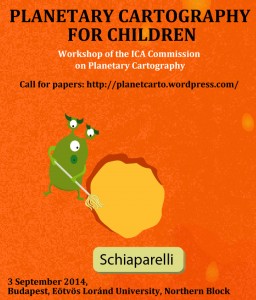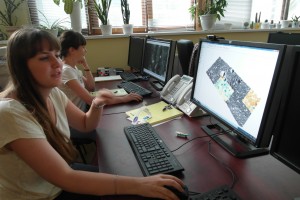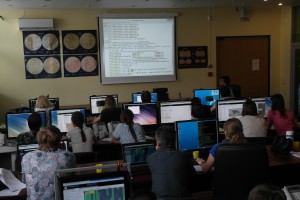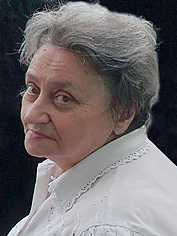
Kira Borisovna Shingareva (Photo by Henrik Hargitai)
We are very sad to inform you, that our colleague Kira Borisovna Shingareva passed away on Sunday, 15 September 2013.
The following text was taken from the book “Map Worlds: A History of Women in Cartography” by Will C. van den Hoonaard (Waterloo, ON: Wilfrid Laurier University Press, 2013, pp. 149–151):
Kira B. Shingareva, professor at Moscow State University for Geodesy and Cartography was Principal Scientist at the Planetary Cartography Laboratory and the Laboratory of Comparative Planetology at the Institute of Space Researches at the Academy of Science. She was one of the most eminent cartographers of extra-terrestrial bodies and was among the first people to succeed in mapping the “dark” (reverse) side of the Moon. She headed the Commission on Planetary Cartography of the International Association of Cartography.
Shingareva was born in 1938 in Russia. Her mother died when she was five years old. Her father was a chemical engineer. It was her father who suggested, at a critical point in her studies, that she should study mathematics in the university’s astronomical curriculum. She admitted that “she is forever grateful to him for that, loving him dearly.”
She studied in Dresden, Germany where she graduated from the Technical University in 1961 (at the age of 23), obtained a PhD in 1974, and a Dr of Science in 1992. Before then, she had gone to the University of Moscow. She wanted to become a mathematician and to study the theory of mathematics. During the exams she did not have enough points to be allowed to continue with mathematics (she just missed it by 1 point). As a consequence, she went to another university which included mathematics in the astronomical curriculum.
After having returned to Moscow from Dresden in 1962, she connected with a friend who was heading the Moon project, and he asked her to work for him at the Laboratory of Comparative Planetology at the Institute of Space Researches under the aegis of the Academy of Science. In October 1959, the Soviet Luna 3 had already succeeded in photographing the Moon’s far side. Three years after her arrival at the Institute, then at the University, she participated, in 1965, in the National Space program and mapped the Moon, Mars, Phobos, and Venus. As a 27-year-old, she was very excited to work on the project. Her main task was to select the landing sites for the moon probes. On 3 February 1966, Luna 9 was able to safely land on the Moon (the first-ever to do so) and take surface close-up images in the Oceanus Procellarum; Luna 13 was able to follow up on these images on 24 December in the same year (Williams, 2005: 2,3).
A turning point early in her career was the 1967 Congress of the International Astronomical Union (IAU) where she presented, for the first time, the nomenclature of the reverse side of the Moon. She was then only 29 years old. The Soviet presentation of Atlas Obratnoi Storony Luny, Ghast 2, 1967 (Atlas of the Far Side of the Moon, Part 2) at the Union failed on several accounts. Shingareva claimed, “the images were of bad quality and there were mistakes.” Ewen A. Whitaker (1999: 176), who was closely involved with the proceedings, noted that the map and a list of new names seemed like a fait accompli. Moreover, some 45% of the names were Russian. In any case, when the USSR delegation presented their nomenclature of the Moon, they faced opposition from the United States National Committee on Lunar Mapping and Nomenclature. It suggested that only numbers should be assigned to the 450 features on the reverse side of the Moon and that “we should be very conservative in assigning names,” and “use names of permanent renown” (Commission de la Lune, 1967: 104).
According to a participant in the tri-annual meetings of the IAU congresses in the 1960s, the controversy started a year earlier, in 1966, when Dr. A. Mikhailov of the USSR Academy of Science sent a letter to Dr. D. Menzel, President of the Lunar nomenclature Commission. Dr. Mikhailov suggested that “names of poets, painters, composers, etc. be used to identify the newly imaged craters on the Zond 3 photos” (Letter from Ewen A. Whitaker to W.C. van den Hoonaard, 28 March 2011). Later that year, the USSR published a list of 153 new names, of which some 66 were Russian, by-passing the rules of the IAU Lunar Nomenclature Committee.
When she presented her map, it became evident that the standards that applied to the near side of the Moon, could not apply to the far side. The near side showed the south pole on top of the map; the far side would show it at the bottom of the map. And where would “east” and “west” be (Whitaker, 1999: 173)? The United States scientists already had much information from their own lunar orbital photographic missions (1966–1967) involving 600,000 high-resolution images (Lunar and Planetary Institute, 2010), but the Soviets wanted her to select craters and name them. The scientists from Europe agreed with the approach taken by the Russian delegation.
After Shingareva had returned to Moscow, a United States colleague sent her a map with a small crater named “Kira” in recognition of her remarkable achievements. She always had that map on her wall. All of her grandchildren know about the Kira crater. She fondly recounts the story of a 102-year-old Russian lunar scientist, naming something after him and believing that he was dead. Soon, she received a letter from him, saying, “I’m very much alive!” It is the International Commission of Nomenclature of the IAU that then ruled that one could now name craters after people who are over 100 years old! Shingareva was busy for 10 years at the USSR Academy of Sciences, participating in the Moon Exploration Project until 1977.
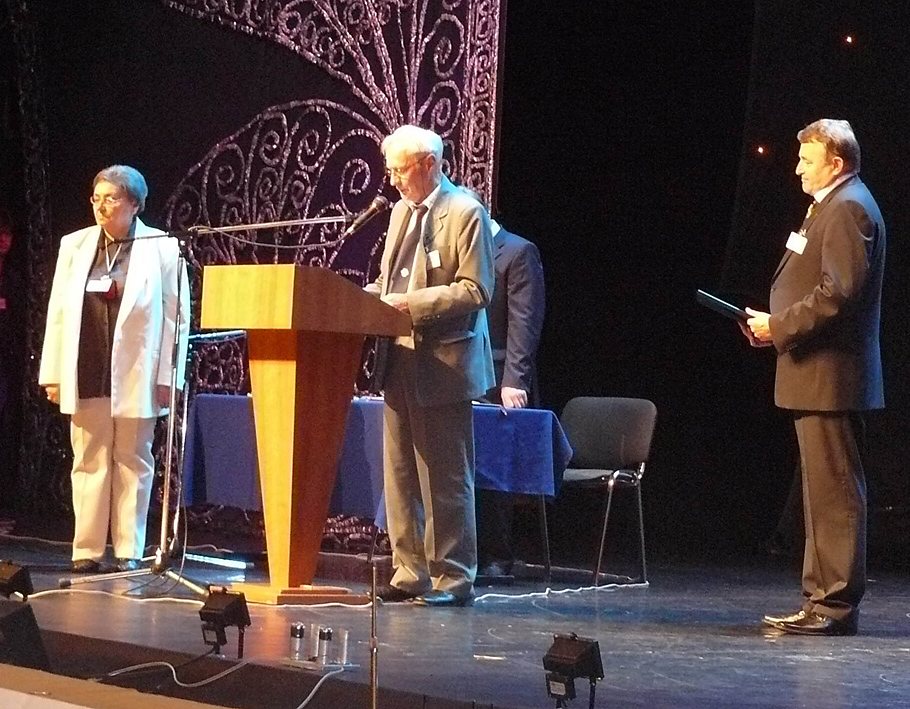
Kira B. Shingareva receiving the ICA Honorary Fellowship in 2007
More than 150 publications to her name, including “Atlas of Terrestrial Planets and their Moons” and “Space Activity in Russia – Background, Current State, Perspectives” (Karachevtseva et al., 2003), she was appointed as co-chairman of ICA Planetary Cartography Working Group, 1995–1999, Chair of the ICA Planetary Cartography Commission, 1999–2003, and, according to the Proceedings of the International Cartographic Conference, “managed such projects as a series of multilingual maps of planets and their moons, glossary on planetary cartography, and specialized map-oriented DB on planetary cartography in the frames of commission activity” (Shingareva, Karachevtseva, and Cherepanova, 2007). On the initiative of the Moscow State University for Geodesy and Cartography (MIIGAiK), several groups in Europe involving Shingareva were working on a Multilingual Planetary Map Series (Hargitai, 2004:150).
More recently, Shingareva has been trying to bring her graduate students to more earth-bound projects such as bringing her experience to bear, in 2006, on finding solutions related to the Moscow Megacity Road and Transport Complex (Sinitsyna and Shingareva, 2006).
Shingareva is well recognized. She was elected Honorary Fellow of the International Cartographic Association (ICA Newsletter, Dec. 2007: 5).
Please also read In Memoriam Kira B. Shingareva by her colleagues from the Commission on Planetary Cartography.




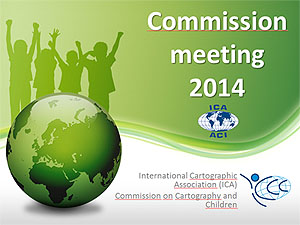 A day before beginning the
A day before beginning the 